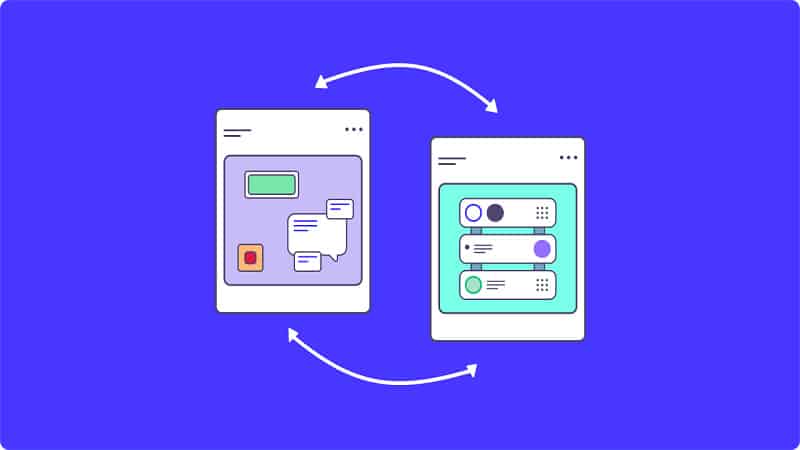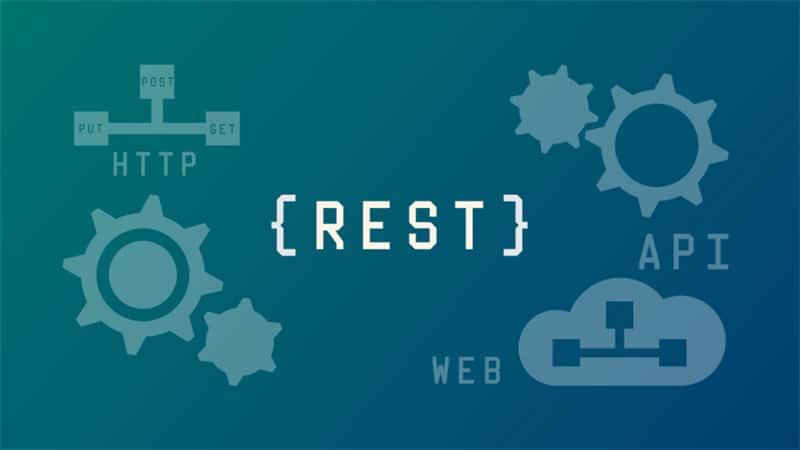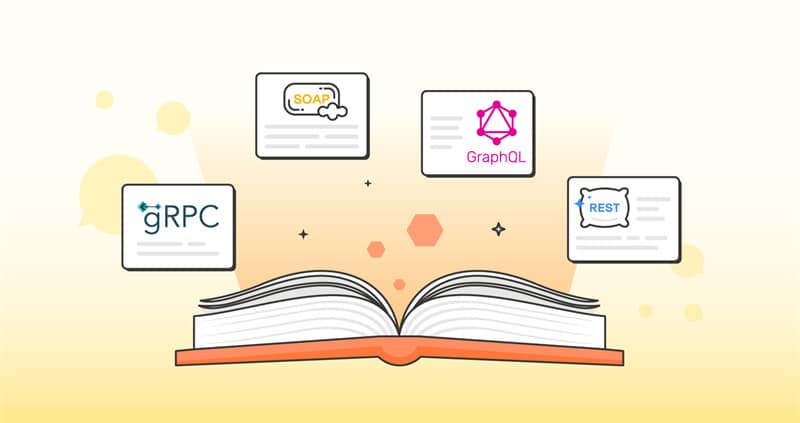
Discover how REST API can revolutionize your new app by enabling seamless communication and data exchange with external systems. Learn the main rules of REST API development and explore the differences between REST and SOAP APIs for enhanced application integration.
The integration of applications and services has become essential for creating robust and user-friendly applications. One of the most popular methods of achieving this integration is through the use of REST APIs (Representational State Transfer Application Programming Interface).
REST APIs offer a powerful and flexible approach to connecting different software systems, enabling seamless communication and data exchange. In this article, we will explore when and why you need REST APIs, as well as the main rules of REST API development and the key differences between REST and SOAP APIs.
When do you need a REST API?

REST APIs are particularly useful when you are building a new application that requires interaction and data exchange with external systems or services. After setting up, for example, a virtual private server for application development, it is worth thinking about the architecture of components.
If your app needs to retrieve data from a remote server, submit data to a server, or perform any other operation involving communication with external entities, a REST API can provide the necessary means to accomplish these tasks efficiently.
Furthermore, REST APIs are highly scalable, making them suitable for applications with a large user base or those that expect significant growth. By using REST, you can design your app to be modular and loosely coupled, allowing for easy integration with other systems as your app expands its functionality.
Why do you need a REST API?
There are several compelling reasons to choose REST API for your new app. Firstly, REST APIs are platform-independent, which means they can be used with any programming language or framework that supports HTTP. This flexibility ensures that you can develop your app using the technologies that best suit your requirements and team's expertise.
Secondly, REST APIs are lightweight and have a simple design, making them easier to understand and implement. They utilize standard HTTP methods such as GET, POST, PUT, and DELETE to perform operations on resources, making the API endpoints self-descriptive. This simplicity not only speeds up the development process but also enhances the maintainability of your application.
For example, if you use a dedicated server for application, you can use server resources for other necessary tasks.
Another advantage of REST APIs is their statelessness. Each request made to a REST API is self-contained, and the server does not need to maintain any session information between requests. This statelessness allows for better scalability and reliability, as servers can process requests independently without being burdened by maintaining session states.
Main Rules of REST APIs
When developing REST APIs, it is important to adhere to certain principles and rules to ensure consistency and interoperability. Here are some of the main rules to follow:
- Each HTTP method (GET, POST, PUT, DELETE, etc.) should be used according to its intended purpose. GET is used for retrieving resources, POST for creating new resources, PUT for updating existing resources, and DELETE for removing resources.
- Design your APIs around resources, and use resource identifiers (URLs) to interact with them. Each resource should have a unique URL, and the API endpoints should reflect the resource hierarchy.
- HTTP status codes provide information about the outcome of a request. Use the appropriate status codes to indicate success, errors, and other relevant conditions, such as 200 for success, 400 for bad request, and 404 for resource not found.
- REST APIs should support content negotiation, allowing clients to request and receive data in different formats such as JSON or XML. This flexibility ensures that the API can be consumed by a wide range of clients.
REST API vs. SOAP API

While REST APIs have gained widespread popularity, it is important to understand the differences between REST and SOAP (Simple Object Access Protocol) APIs. SOAP is a protocol that uses XML for message exchange and can operate over various transport protocols, including HTTP, SMTP, and more. Here are some key distinctions between the two:
- SOAP APIs tend to be more complex due to the XML-based messaging and additional protocols involved. REST APIs, on the other hand, have a simpler design and use standard HTTP methods and formats like JSON.
- REST APIs are typically more scalable due to their stateless nature and lightweight architecture. SOAP APIs require more resources and can be more challenging to scale.
- REST APIs offer greater flexibility and interoperability since they can be consumed by a wide range of clients, including web browsers, mobile apps, and IoT devices. SOAP APIs are primarily used in enterprise environments and may have limited compatibility with certain platforms.
In conclusion, REST APIs provide a powerful and flexible solution for integrating your new app with external systems and services. They offer simplicity, scalability, and platform independence, making them an excellent choice for modern application development.
By following the main rules of REST API development, you can create well-designed and interoperable APIs that enhance the functionality and usability of your app. While SOAP APIs still have their place, REST APIs have become the de facto standard for building web services in today's interconnected world.










